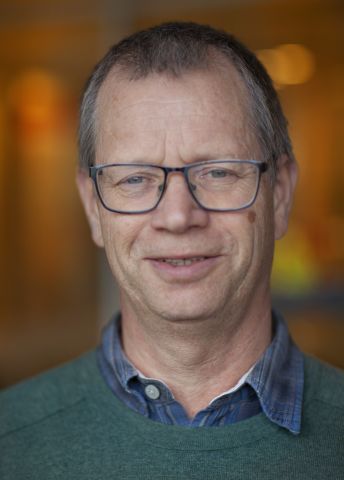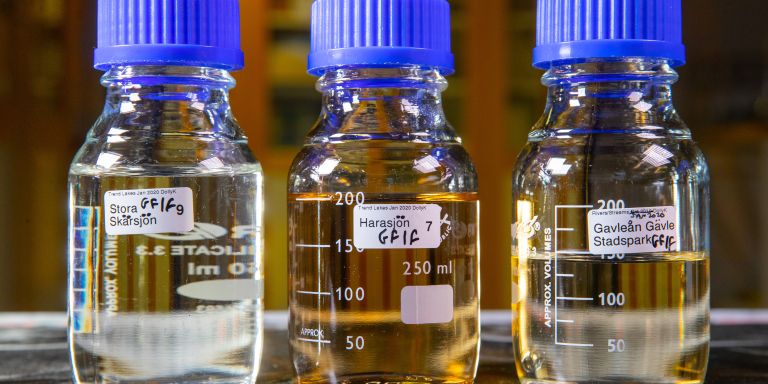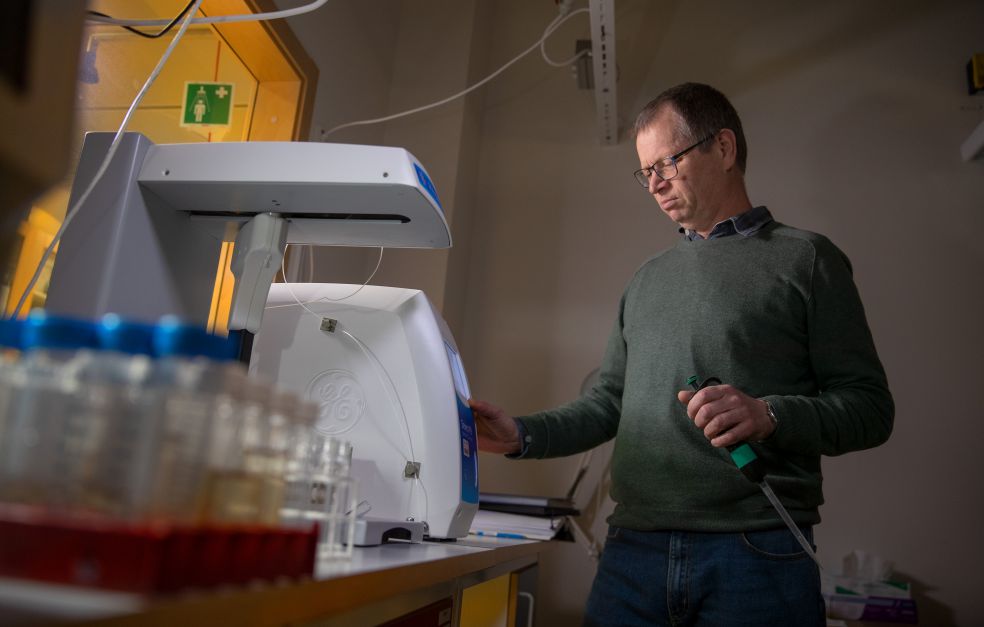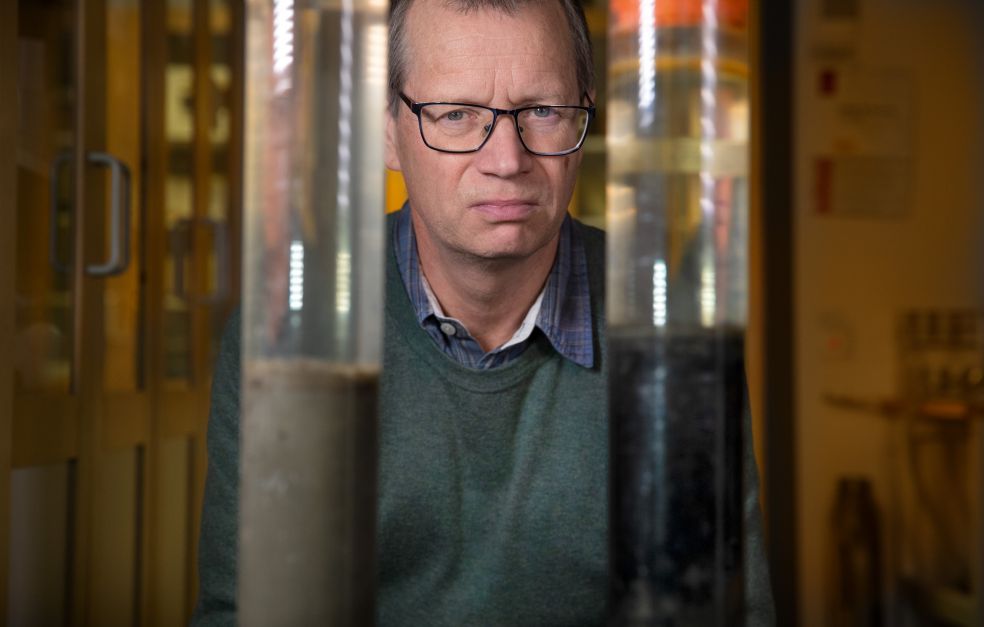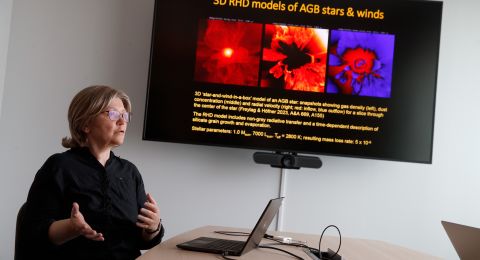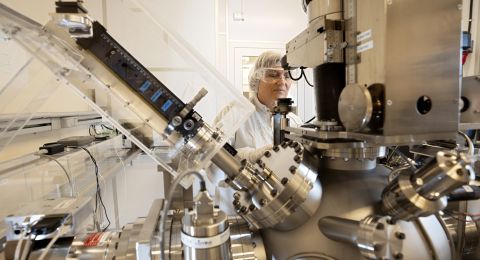Large quantities of dead organic matter from plants and animals can occur throughout the natural environment. Some of it is degraded and adds to emissions of carbon dioxide, but much of it remains more or less as it is for a long time. Wallenberg Scholar Lars Tranvik is examining the reasons for this phenomenon, which has important implications for the global climate, among other things.
Lars Tranvik
Professor of Limnology
Wallenberg Scholar
Institution:
Uppsala University
Research field:
From studies of chemical and biological diversity in dissolved organic matter, and in the organisms that interact with it, to large-scale consequences of microbial activity, such as the exchange of carbon dioxide and methane with the atmosphere.
Tranvik enjoys spending time in the great outdoors, but whereas many people would be drawn to beautiful landscapes or a good spot to pick berries or mushrooms, he views his surroundings with the scientist’s eye for nature’s hidden processes.
“I do see the beauty around me of course, but few people see a rotting tree trunk on the ground and pause to reflect on the CO2 it is generating. When I see a body of water, I think of the methane it gives off, and if I pass by a peat bog, I think of it as a massive carbon sink.”
There is an enriching dimension to be discovered for those with an interest in nature – a biogeochemical perspective that is a feature of Tranvik’s own research. As a professor of limnology at Uppsala University, he researches on freshwater ecology. Much of the subject concerns the role played by microorganisms in lakes and aquatic systems. He has previously shown that the world’s lakes and watercourses are major sources of carbon dioxide and methane emitted into the atmosphere, but that they are also important global carbon sinks.
Lake Erken project
One example is an interdisciplinary project funded by Knut and Alice Wallenberg Foundation, focusing on carbon turnover in lakes. The research is a cross between field studies and controlled experiments in which some twenty dams, known as mesocosm systems, have been lowered into Lake Erken near Norrtälje, 68 km north of Stockholm. The volume of the dams was approximately one cubic meter, and they contained everything from dissolved organic compounds to bacteria and fish.
“We concentrated on dissolved organic matter, i.e. what makes lake water brown, and how it runs off the surrounding land and impacts the ecosystem.”
The project has yielded exciting new findings about how the greenhouse gases carbon dioxide and methane interact to create a greenhouse gas effect causing varying impacts.
“We can see how carbon dioxide and methane interact along gradients due to microbial activity in the water and sediment. If the water becomes saturated with the gases, they escape into the atmosphere. We can also measure these flows.”
But much of the organic matter also remains in sediment, sequestering carbon for long periods, in some cases for thousands of years.
“It just lays there until it gets scraped off during the next ice age.”
A universal theory
Tranvik, who is a Wallenberg Scholar, wants to go a step further and find out how stable the organic matter is by testing hypotheses from different fields of research. A central question is how much of the organic matter remains in ecosystems, how much is mineralized into carbon dioxide, and what regulates the balance between the two. The answers vary, depending on who you ask.
“Completely different theories prevail, depending on whether you talk to specialists in soil systems or lakes or the marine environment. But my vision is to create a universal theory governing the decomposition of organic matter.”
The current view, as far as soil scientists are concerned, is that external factors determine how much carbon remains in soil. These factors include how the material adheres to different mineral surfaces, and how wet the soil is.
“But specialists studying organic matter in lakes and seas tend to hold the opposite view. For them, it’s mainly a question of the inherent properties of the organic molecules.”
Tranvik thinks that these disparate theories have arisen because many researchers have become too tied to their preconceived lines of inquiry, and because of poor communication between them. He believes in combining knowledge from the different fields to get closer to a general theory.
“I hope it will be fruitful to bring together researchers with backgrounds in different fields in a joint project.”
“Being chosen as a Wallenberg Scholar is a huge bonus. It enables me to adopt a long-term approach with enough elbow room to conduct curiosity-driven research – in my case with a high degree of relevance to global ecosystems and how they change.”
It is hoped that, piece by piece, laboratory studies will enable the researcher to map various processes, for instance how organic matter is protected by adhering to clay particles, how decomposition may change as organic matter ages, and the importance of diversity, the properties of the dead material and the microorganisms involved.
“Of course, it might be that certain factors are more critical in water and others in soil, but if so, the reasons for this can be described in greater detail.”
Samples will be collected from widely differing environments – from the deep oceans to permafrost.
“This will make the analytical chemistry an enormous challenge, since we want to be able to make comparative studies in completely different environments.”
Contributing to UN climate models
Tranvik considers that formulating a universal theory has an intrinsic value, but that the results may also ultimately lead to a new and better understanding of global climate. A clearer picture of the carbon cycle has a bearing on climate.
“It will be possible to draw more conclusions about the carbon balance in the biosphere, as well as flows and stores of carbon.”
He envisions the research being used in the major global models made by the UN International Panel on Climate Change.
“It would be exciting to contribute to a more detailed understanding of the carbon cycle. Although we are doing basic research, it has a bearing on the climate system – one of the burning issues of our time.”
Text Nils Johan Tjärnlund
Translation Maxwell Arding
Photo Magnus Bergström
